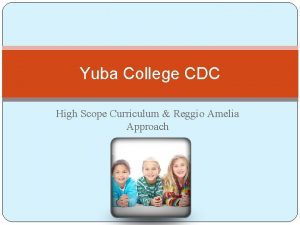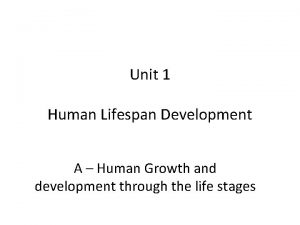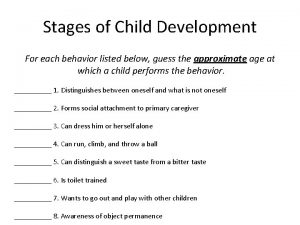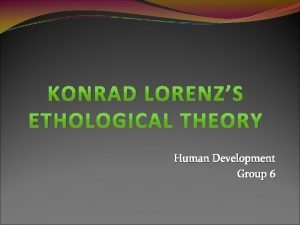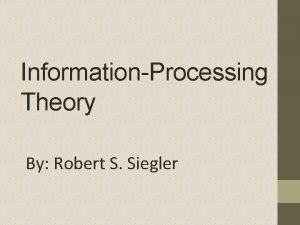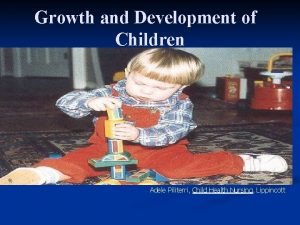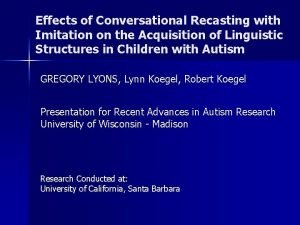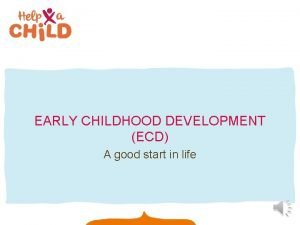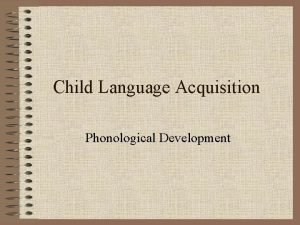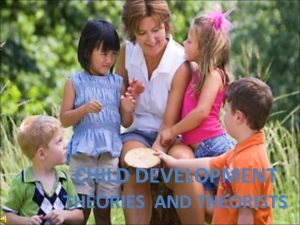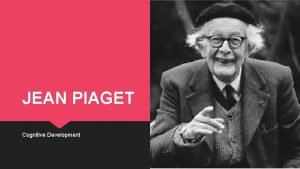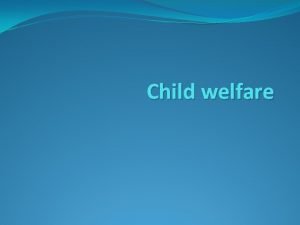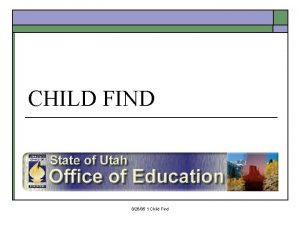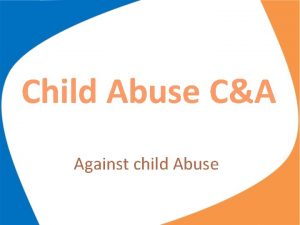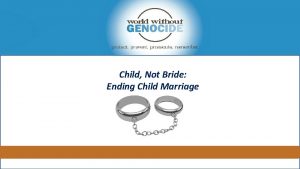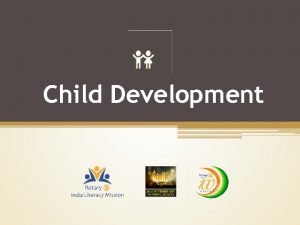CHILD DEVELOPMENT What is child development Child development












- Slides: 12

CHILD DEVELOPMENT

What is child development? Child development - the biological and psychological changes that occur in people between birth and the end of adolescence Changes in a child occur very quickly – from month to month or even from week to week!

Developmental Areas Physical – involves the growth of the body and the strength and coordination of muscles Large motor skills Small motor skills Hand-eye coordination Intellectual – involves the ability to think, understand, reason, and communicate Includes language skills

Developmental Areas Emotional – relates to emotions and children’s expressions of these emotions Social – refers to children’s interactions with others Sharing, getting along, making friends, etc. Moral – involves the understanding of right and wrong

Developmental Influences Heredity – refers to all of the traits that you have inherited from your parents, grandparents, and other relatives Traits are passed through your genes Determine your body type, skin color, hair, etc. You can also inherit certain talents and personality traits

Developmental Influences Environment – what surrounds you and affects your development and behavior Family Friends Home life School Community Technology Computers Television Video games

Developmental Influences A family’s level of education, income, access to health care, culture and traditions also influence a child’s development Culture influences parents’ and caregivers’ roles and what and how children are taught

Developmental Stages In general, development in all areas follows a general and progressive sequence. As people develop, they accomplish certain developmental milestones – skills achieved at a particular stage of life Everyone proceeds through developmental stages in the same sequence, but the rate of progress differs from person to person.

Developmental Stages Young Infants (0 -6 months) Can look at faces and recognize caregivers’ voices Neck muscles strengthen – allowing them to hold their head up Roll over from their stomach to their back Communicate by cooing, laughing and crying Older Infants (6 -12 months) Eat solid foods and drink from a cup Sit alone, crawl and stand Some begin to walk Interact more with caregivers Imitate others’ actions and facial expressions Explore items by putting them in their mouths Language has developed from cooing to babbling – usually speak their first word by their first birthday

Developmental Stages Young Toddlers (12 -24 months) Eat table foods and use spoons to eat Walk, climb steps without help and run (but clumsy) Roll a ball, turn pages of a book, scribble with crayons Want independence – tell caregivers “no” Need to be taught how to behave in public and to share Biting is common Using more words to communicate feelings, wants and needs Older Toddlers (24 -36 months) Become toilet trained Dress themselves Have trouble sharing Engage in parallel play – play alongside other children but not with them Increased vocabulary Develop a conscience – inner sense of right

Developmental Stages Preschoolers (3 -5 years) Large motor skills well developed; fine motor skills becoming more defined Develop skills they need for school Increased vocabulary Move to cooperative play – play with other children and learn to share, take turns, solve problems and control their emotions School Aged Children (5 -12 years) Activities away from home foster independence Develop their sense of self Experience stress due to increased academic pressure Worry about school and family life Friendships become more complex Learn teamwork and compromise Can consider another person’s feelings

Developmental Stages Adolescence (13 -19 years) Begins with puberty – changes in physical appearance Some changes can be awkward – for example: acne Physical changes can affect emotions Experience mood swings Have the ability to reason and think of alternatives to problems Friendships become more solid Relationships with the opposite sex become more important The family remains a stable base for teenagers
 Left child right sibling
Left child right sibling Reggio curriculum
Reggio curriculum Bowlby theory child development
Bowlby theory child development Undergeneralization child development
Undergeneralization child development Example of assimilation in child development
Example of assimilation in child development Lahc verify my fafsa
Lahc verify my fafsa Ethological theory of human development
Ethological theory of human development What do information processing theories focus on
What do information processing theories focus on Piliterri
Piliterri Recasting technique
Recasting technique Child development matrix
Child development matrix Phonological development in child language acquisition
Phonological development in child language acquisition Child development theorists
Child development theorists

